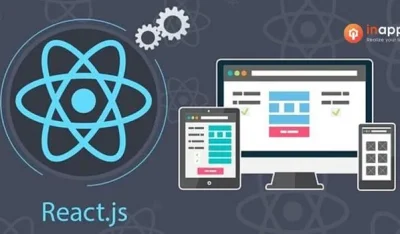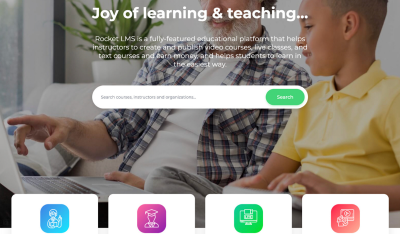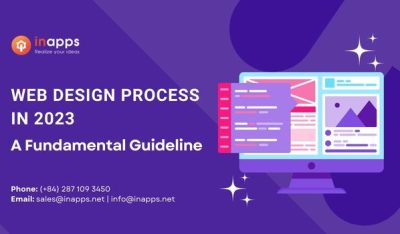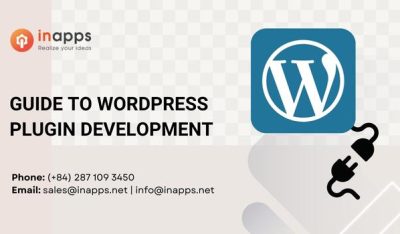- Home
- >
- Web Design & Development
- >
- Single-Page vs Multi-Page Website For A New Startup Business
With every new innovation in the field of Web development, new challenges emerge for search engine optimization specialists. It’s obvious that your website’s user experience and interface affect its performance. And ultimately, these two factors serve as a ranking signal to Google.
A poor layout with slow performance will never impress any of your visitors. Likewise, a well-designed website that loads quickly and offers a top-notch experience will make them come back again for more.
And the same goes for keyword optimization; it’s important that your website targets the right keywords on each page.
The debate between single-page websites and multi-page websites revolve around these factors. Start-ups in particular ponder over the pros and cons of both to decide which one is best for them.
Let’s first understand what’s a single-page website and what’s a multi-page one, the differences between the two, so we can decide which one is a better choice for start-ups.
What’s a Single-Page Website?
A single-page website contains only one page; no beating around the bush or fancy pages with fluffy details, just to the point content. Such websites do not have any About Us page or Contact page.
But there are different sections on the same page. For example, by clicking on a navigation link, the user will be directed to a certain section. As it goes without saying, these sites are in a scrolling format — which is bound to be lengthy.

Pros of a Single-Page Website
To begin with, good single-page websites are simple and easy to navigate. Users can easily absorb a one-page website that divides material into little bits and removes UI clutter.
The adoption of a single-page design also helps to create an intuitive user journey. Visitors can experience a linear navigation flow – which tells a tale with a clearly defined beginning, middle, and end – because there are no additional pages.
Also Read | UX Design Tools for Web Designers
Another benefit of having a simple navigation design is that the user usually only needs to take one action. According to studies, single-page sites have a higher conversion rate (>37.5%) than multi-page sites because consumers start the process sooner and travel through it faster, with no place to get confused or sidetracked by another offer.
Cons of a Single-Page Website
SEO isn’t a major deal for single-page websites (Search Engine Optimization). In fact, they may jeopardize your Google ranking, as well as reduce conversions and user engagement. On single-page sites, target keywords are frequently overlooked due to the lack of content.
Furthermore, because of its restricted potential to scale, the one-page website isn’t the best choice for a growing brand. Single-page websites, as we’ve seen, have a singular perspective and are thus unsuitable for websites that require a vast, complicated, and/or varied amount of content.
What’s a Multi-Page Website?
In website design, multi-page websites are the traditional websites we see daily while surfing. These have dozens of different pages, some defining your services while some educating users in the form of a blog section. Upon clicking the navigation link, you land on a different page.
Also Read | APIs You Need On Your Website

Businesses selling multiple products or services create these sites to keep their online presence organized. Besides that, they can easily create a keyword strategy for each page, which is not the case in a single-page website.
Pros of a Multi-Page Website
To begin with, the multi-page architecture allows for infinite scalability. Make as many pages as you like and enhance the navigation system as necessary.
Second, a multi-page site’s navigation flow is simple to follow. Because this form of the website has been since the 1990s, most users are accustomed to it and expect to find several pages on websites.
Finally, multi-page websites offer strong SEO possibilities. We’ve established that multi-page websites are more likely to feature more material than single-page websites.
Cons of a Multi-Page Website
Multi-page websites appear to have worked for us in the past, but there are a few drawbacks to consider.
Contemplate how you’ll handle regular site updates, for example. Don’t forget that the design and content teams are responsible for maintaining all of that stuff. Consider whether having a lot of material is cost-effective when deciding whether to construct a one-page or multi-page website.
Another factor to examine is the bounce rate of your website. Websites with a lot of material take a long time to load, are distracting, and can cause people to leave.
Also Read | Why Choose Angular For Web Development Project?
Single-Page Websites vs Multi-Page Websites
Before we jump to any conclusion, we need to compare bothSingle-Page Websites vs Multi-Page Websites.

Clean Design & Display
One of the biggest benefits of single-page websites is their neat layout. For the ease of the users, split the content into small chunks and make the information present easily comprehensible for the visitor.
But designing such layouts and UIs requires creativity and lots of iteration before reaching the final state.
Navigation Flow
Today, people have small attention spans. You must represent the most important information fast or else the visitor will find another source of information.
With no additional pages in a single-page website, a visitor gets a clear view of the navigation. He can click on the relevant link and instantly get access to that section.
Conversions
If someone lands on your website with a buying intent, chances are they want quick access to the product. Single-page designs, therefore, turn out to be more useful, offering better conversion (>37.5%) than multi-page ones. But once again, presenting every detail about the product in a small space is an art you need to master.
SEO
This is one extremely important area where you would prefer to have a multi-page website over a single-page one. The thing is, it’s difficult to rank a single-page website on different keywords because you will cause clutter.
Normally, in keyword strategy, we dedicate a few relevant keywords to each page. And even use internal linking to boost SEO. But you don’t get this option on a single-page website.
You are supposed to target all the primary and secondary keywords on the same page. At the same time, you get very little space for text content; the less content you have, the lower your chances of getting ranked on Google.
In traditional websites, you can target service-driven keywords on each page to boost each service individually. Further, you get an opportunity to link your pages so the ranked pages can pass authority to the ones not getting any traffic.
Single-Page Web or a Multi-Page Web for Start-Ups?
Um…for start-ups, a multi-page website is a relatively better option. In the early days, every online business has to hustle to build authority and win Google’s trust. And optimizing a single page is much more difficult than creating a detailed keyword sheet for each page of a multi-page website. It’s like limiting yourself.
Also Read | How to Hire Freelance Web Design Agency?
No doubts over the performance and clean interface of single-page websites, but they are only suitable once you have become a brand; people know you, they are searching for you.
But for a start-up, not having enough space for content means no opportunity for secondary keywords. You solely rely on the primary (high search volume) keywords to boost your visibility.
Besides that, a single-page website requires you to regularly update content. And this content does not always look perfect on a mobile device. It’s irritating to use such lengthy scrollers on mobile.
And if you don’t manage each element with elegance, your website will be full of clutter — and make your user cringe! Eventually, it will result in a higher bounce rate and that will negatively affect the bounce rate.
So for start-ups, Codersera recommends traditional multi-page websites.
- What is the benefit of using a multi-page website?
A big advantage for multi-page is that it provides lots of content, with no limitation on text, images or videos. The more pages you create, the more space you have for adding content. This is also very beneficial for Search Engine Optimisation (SEO).
- Is it better to have more or less pages on a website?
Having more pages also gives your website a higher probability of ranking which eventually determines the ranking parameters for your website. The most important advice to rank well is still to produce great content quality instead of publishing simply a large volume of content every week or month.
- How many pages should a business website have?
Your Business Should Have 51-100 Pages To Start
When you build your website, you should have a solid foundation of pages to build on. You want to have all of the basic pages that will explain to customers who you are and what your business offers.
Source: InApps.net
Let’s create the next big thing together!
Coming together is a beginning. Keeping together is progress. Working together is success.




















